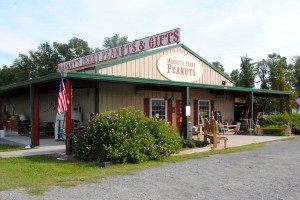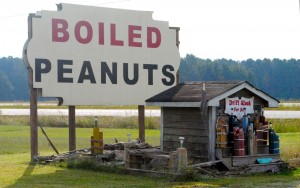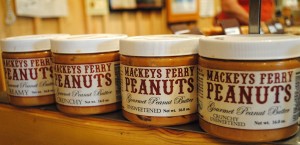By Brynna Bantley, Grace Elkus, Anne Marie Glen, and Dustin Swope, 2013
Every year, Raleigh takes time to celebrate culture and diversity by hosting the International Festival of Raleigh. The annual festival aims to explore other cultures, their ways of living, and new perspectives of thinking about the world. For many attendees, it’s a night to celebrate one’s heritage and history and share it with the community they now call home. Additionally, it’s an opportunity for those who identify themselves as American first and foremost to gain an appreciation for just how ‘global’ their community is.
The night started out as a test of patience. Having arrived at the Raleigh Convention Center at 4:30 p.m., we assumed we would be first in line for the 5:00 opening of the festival. Instead, we found ourselves standing in a long line with no signs of motion. We took this time to people watch, taking note of the various ages and ethnicities of attendees. Our first multi-cultural moment of the evening occurred when a very small Japanese boy bumped into one of our group members, and his grandmother took the opportunity to teach him to say “I’m sorry” in English.
For the true “outsider” — not from Raleigh, not from North Carolina, only knowing what is implied by news stories from the area and statements by political representatives — this was the perfect reality check. Clearly, Raleigh residents will turn out for a chance to step outside their comfort zone and share their culture humbly with others. And nothing on TV gave us reason to expect whole families who spoke Japanese as their first language lived in Raleigh. Until now, we had expected the international festival to be what one could learn from the Internet, put into action. Maybe this wouldn’t be the case, after all. Both these lessons lifted our spirits, and we hadn’t even entered the festival yet!
Forty minutes later, we had made our way in. Arriving on the second level, looking down over the festival, we were overwhelmed by the vast size of the event. Peering at our pamphlets, we learned that the large stage would soon host various dance groups and performers. The makeshift walls set up in the corner indicated cooking demos would be taking place. Long rows of white tents promised arts and crafts for sale from every country, and unicyclists and cameraman weaved their way through the crowds. But our first stop wasn’t the stage, or the crafts. It was the food.
Between the four of us, we covered a fair amount of ground. We tried the veggie platter from the Indian station, which consisted of rice, naan, paneer, gulab jamon, mango lassi, and channa masala. A visit to Kenya brought us spicy boiled spinach, while Afghanistan boasted turkey-and-cream-cheese samosas and Cambodia offered seafood summer rolls. A handful of decadent bean paste dumplings from China and Vietnam were all met with sighs of approval. We munched on sweet potato fries from Kenya while sipping bubble tea from Taiwan. We savored Stroopwafel from the Netherlands and red bean buns from Japan. Once we were full and satisfied, we noticed it was time for the cooking demo, so we made our way over.
As soon as we stepped into the demo, smells of garlic and ginger wafted over to us. We sat and watched as a local restaurant owner made ground pork and cabbage dumplings (recipe below). We learned how to peel ginger with a spoon, learned the pros and cons of steaming, frying, and sautéing dumplings, and were taught multiple techniques on how to seal the wrapper closed. The restaurant owner was adopted from Korea and raised in Detroit, so she said the Korean-inspired food at her restaurant brings together influences from Korea, Detroit and North Carolina. She also said she gives chefs room to be creative with seasonal ingredients, so the menu is constantly changing.
While the cooking demos were going on, there was music echoing through every corner of the hall. In the Biergarten area, where patrons could buy beers from parts of the globe from Ireland to Japan, the stage was first host to singer Ye Ning Feng, treating the audience with the unique sound of Chinese opera, and dazzling in her red silk performance dress. Following her melodic act was The Paco Band, a Spanish and nuevo flamenco ensemble who played a spirited set that left the listener wanting more.
The multiple stages were not the only places where global music could be heard. Even just wandering around, maybe getting a little lost in the many countries’ booths, one could hear the sounds of faraway lands, brought close together by the festival. In Japan’s booth, a woman expertly played the koto, a large string instrument played sitting up over it, like a piano. A large crowd was gathered around to watch and enjoy the soulful notes. Those of all ancestries gathered and appreciated the feelings evoked by the traditional instrument, unable to just walk by such beauty.
Not only did we leave the festival full of food, we left full of appreciation for the diversity present in Raleigh and for everyone who shared their culture with us throughout the night. Needless to say, it was well worth the wait.
“Happy Hug” dumplings:
Makes 45-50
1 lb. ground pork
2 tbs. chopped fresh ginger
1 tbs. freshly minced garlic
3 tsp. salt
1 ½ cups finely chopped cabbage
All-purpose flour
Hot water
1. Put the ground pork in a large bowl and add the ginger, garlic, 2 tsp. salt and cabbage. Using your hands, mix the ingredients together. Freeze the mixture if you are making the dumplings in advance.
2. For the wrapper, use 3 parts flour to 1 cup hot water. Mix the two together and 1 tsp salt. Knead the dough, then roll it out into a thin sheet. Use a pastry cutter or a biscuit cutter to cut out circles.
3. Take one wrapper and scoop a little less than 1 tbsp. of filling onto the middle. Fold up the sides and pinch the top closed, then pinch the sides together.
4. These can be steamed, fried, or pan-sauteed. For sauteing, heat a little bit of olive oil in a pan. When it is shimmering but not smoking, add the first round of dumplings. Cook one side, then flip. Dumplings are ready when the wrapper has turned a golden-brown color. They can be eaten plain, or can be added to soup with greens and scallions. For a sauce, mix together soy sauce, sesame oil, ginger, garlic, and scallions. Enjoy!



